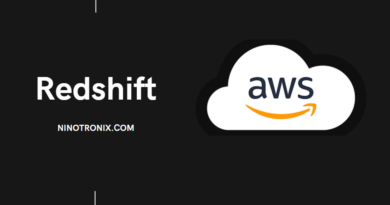Using AWS QuickSight to Create Stunning Data Visualizations
AWS QuickSight is a cloud-based business intelligence service that allows you to easily create and publish interactive dashboards, reports, and charts from multiple data sources. In this article, we will explore how to use AWS QuickSight to create stunning data visualizations .
Step 1: Create a Data Source in AWS QuickSight The first step is to create a data source in AWS QuickSight. To do this:
- Go to the QuickSight console.
- Click on “Manage data” in the navigation menu.
- Click on “New data set”.
- Select your data source type from the list of supported sources (e.g. Amazon Redshift, Amazon S3, or Amazon RDS).
- Enter the connection details for your data source and click on “Validate connection”.
- Choose the tables or files you want to use as your data source.
- Click on “Edit/Preview data” to preview and modify your data.
Step 2: Create a New Analysis in AWS QuickSight After creating a data source, you can create a new analysis in AWS QuickSight to start visualizing your data. To create a new analysis:
- Click on “New analysis” in the QuickSight console.
- Select your data source from the dropdown menu.
- Choose the data you want to include in your analysis.
- Click on “Visualize”.
Step 3: Create a Visual in AWS QuickSight Once you have created an analysis, you can start creating visualizations in AWS QuickSight. To create a new visual:
- Click on “Visualize” in the analysis menu.
- Choose the type of visual you want to create from the list of supported visuals (e.g. bar chart, line chart, or scatter plot).
- Choose the fields you want to use for your visual.
- Customize your visual by adding titles, changing colors, or adjusting the formatting.
- Click on “Save and visualize” to save your visual and add it to your analysis.
Step 4: Create a Dashboard in AWS QuickSight After creating one or more visuals, you can create a dashboard in AWS QuickSight to display them in a single view. To create a new dashboard:
- Click on “New dashboard” in the QuickSight console.
- Choose the layout for your dashboard from the list of available options.
- Drag and drop your visuals onto the dashboard canvas.
- Customize your dashboard by adding titles, text, or images.
- Click on “Save” to save your dashboard.
Step 5: Share Your Dashboard with Others Once you have created a dashboard in AWS QuickSight, you can share it with others in your organization or outside of your organization. To share your dashboard:
- Click on “Share” in the QuickSight console.
- Choose the permission level you want to grant to your viewers (e.g. read-only or editor).
- Enter the email addresses of the people you want to share your dashboard with.
- Add a custom message if desired.
- Click on “Send” to share your dashboard.
Step 6: Schedule Refreshes for Your Data Source To ensure that your data is up-to-date in AWS QuickSight, you can schedule refreshes for your data source. To schedule a refresh:
- Click on “Schedule refresh” in the data source menu.
- Choose the frequency and time of day for your refresh.
- Click on “Apply” to save your refresh schedule.
Step 7: Use Machine Learning Insights in AWS QuickSight AWS QuickSight also provides machine learning insights that can help you continue better understand your data and identify trends and patterns. To use machine learning insights in AWS QuickSight:
- Click on “Insights” in the QuickSight console.
- Choose the data source and fields you want to analyze.
- Select the machine learning algorithm you want to use (e.g. anomaly detection or forecasting).
- Customize your insights by adjusting the parameters and settings.
- Click on “Generate insights” to generate insights based on your data.
Step 8: Use Advanced Analytics in AWS QuickSight AWS QuickSight also provides advanced analytics features that allow you to perform more complex analysis on your data. To use advanced analytics in AWS QuickSight:
- Click on “Advanced analytics” in the QuickSight console.
- Choose the data source and fields you want to analyze.
- Select the type of analysis you want to perform (e.g. cohort analysis or funnel analysis).
- Customize your analysis by adjusting the parameters and settings.
- Click on “Run analysis” to generate your analysis.
Conclusion AWS QuickSight is a powerful tool that can help you create stunning data visualizations and gain valuable insights from your data. By following the steps outlined in this article, you can easily create a data source, analysis, visual, dashboard, and schedule refreshes for your data. You can also take advantage of machine learning insights and advanced analytics to perform more complex analysis on your data. With AWS QuickSight, you can quickly and easily create beautiful and informative data visualizations that can help you make more informed business decisions.




